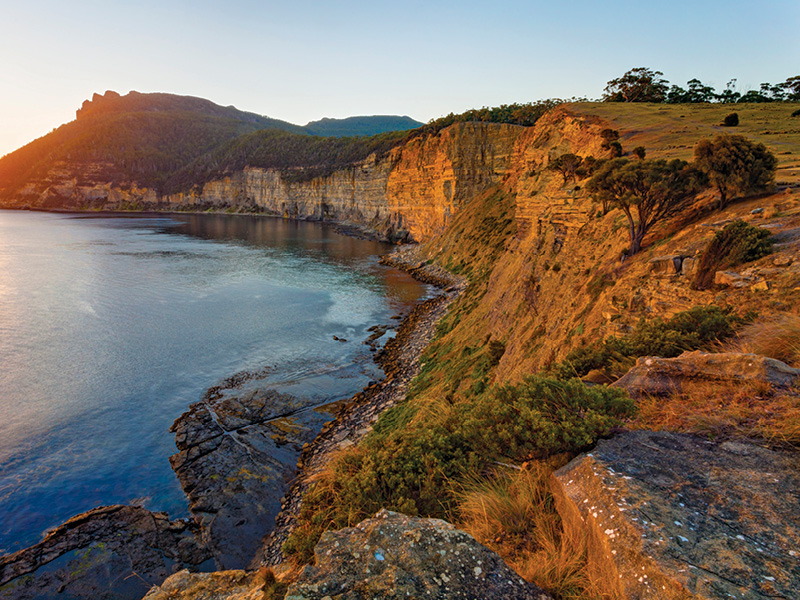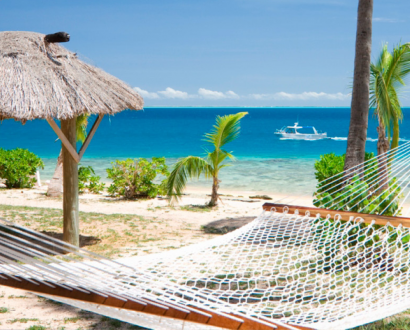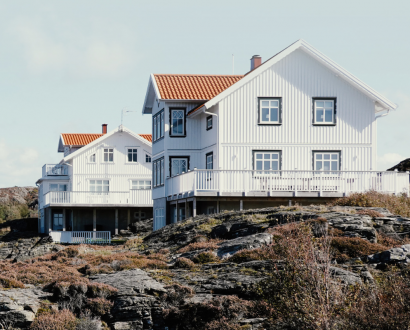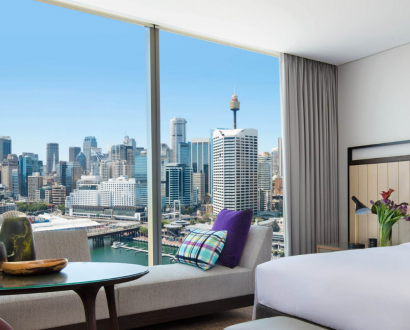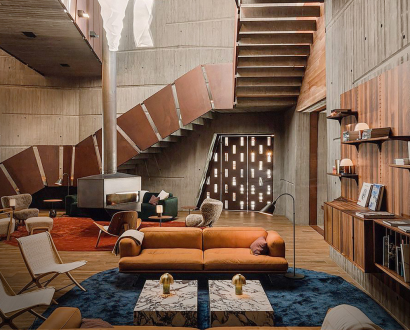It’s a character-defining moment: standing waist deep in an inlet wearing a pair of underwear, a rainproof jacket and a backpack. I look as ridiculous as I feel, and fail to supress the giggles as my quickly-numbing legs transport me to the other side of the inlet where, it must be noted, the grass is markedly greener. I hurriedly dry my legs and reinstate my trousers and hiking boots while one of my hiking guides — seemingly unfazed by the impromptu, pants-less water crossing — says, “That’s the thing about this beach: with the varying weather, you can never really predict how deep the crossing is going to be.” I look up and notice that the tide is especially high. “A lot of the time, you don’t even have to take off your boots,” he continues. A comment my fellow hikers and I could probably have done
without hearing.
Of course, it’s these moments — the ones in which you push your limits and embrace the unfamiliar — as much as those spent in awe of nature’s tranquil beauty, that make The Maria Island Walk truly spectacular. I’m jumping ahead in the narrative, however. Let me take you back to the beginning, well before I found myself half-naked in a stream. The Maria Island Walk is the manifest dream of husband-and-wife duo Ian and Bronwyn Johnstone.
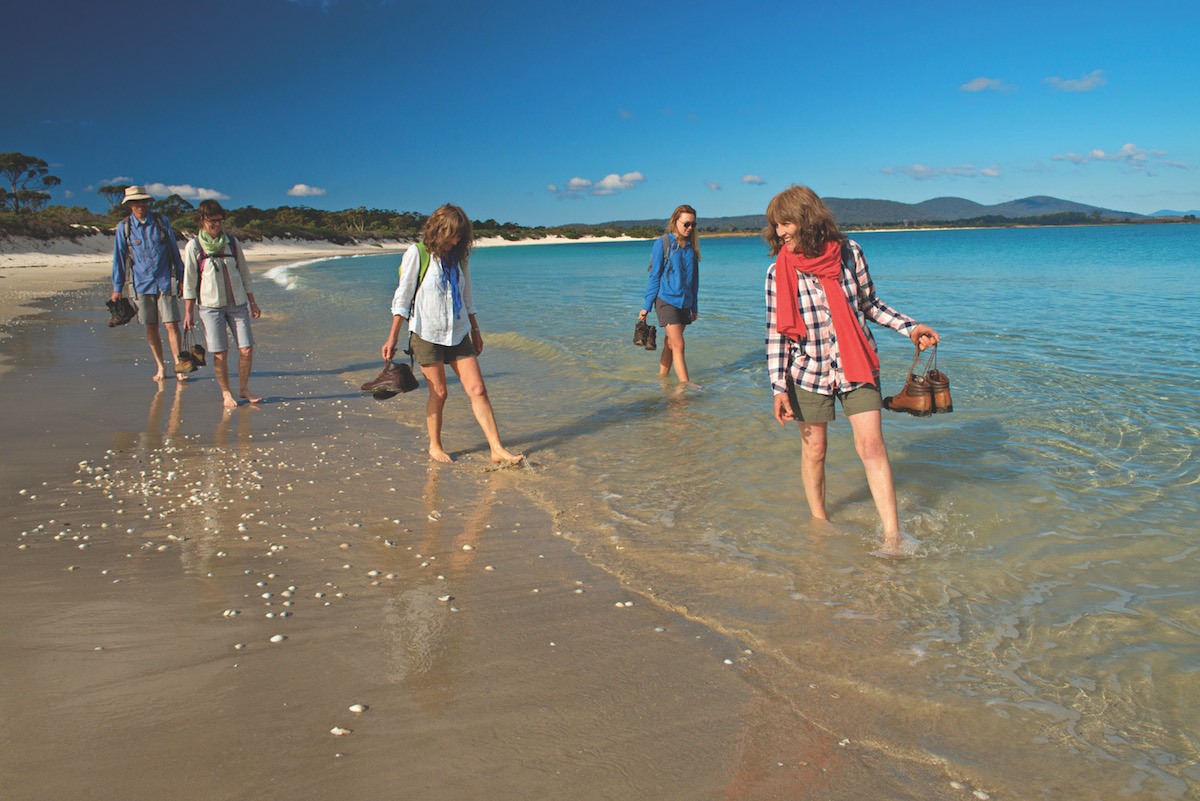
Having fallen in love with the remote wilderness that exists just a short boat ride off the east coast of Tasmania, the couple wanted to share the island’s patent beauty and rich history with travellers the world over, particularly those with a proclivity for activity-cum-luxury. Now in its fifteenth year, the company functions like clockwork; each seemingly minute detail cultivated to perfection, from the provision of necessities like sun cream and insect repellent to equally essential luxuries like locally sourced Pinot Noir and Tasmanian brie and wasabi cheddar.
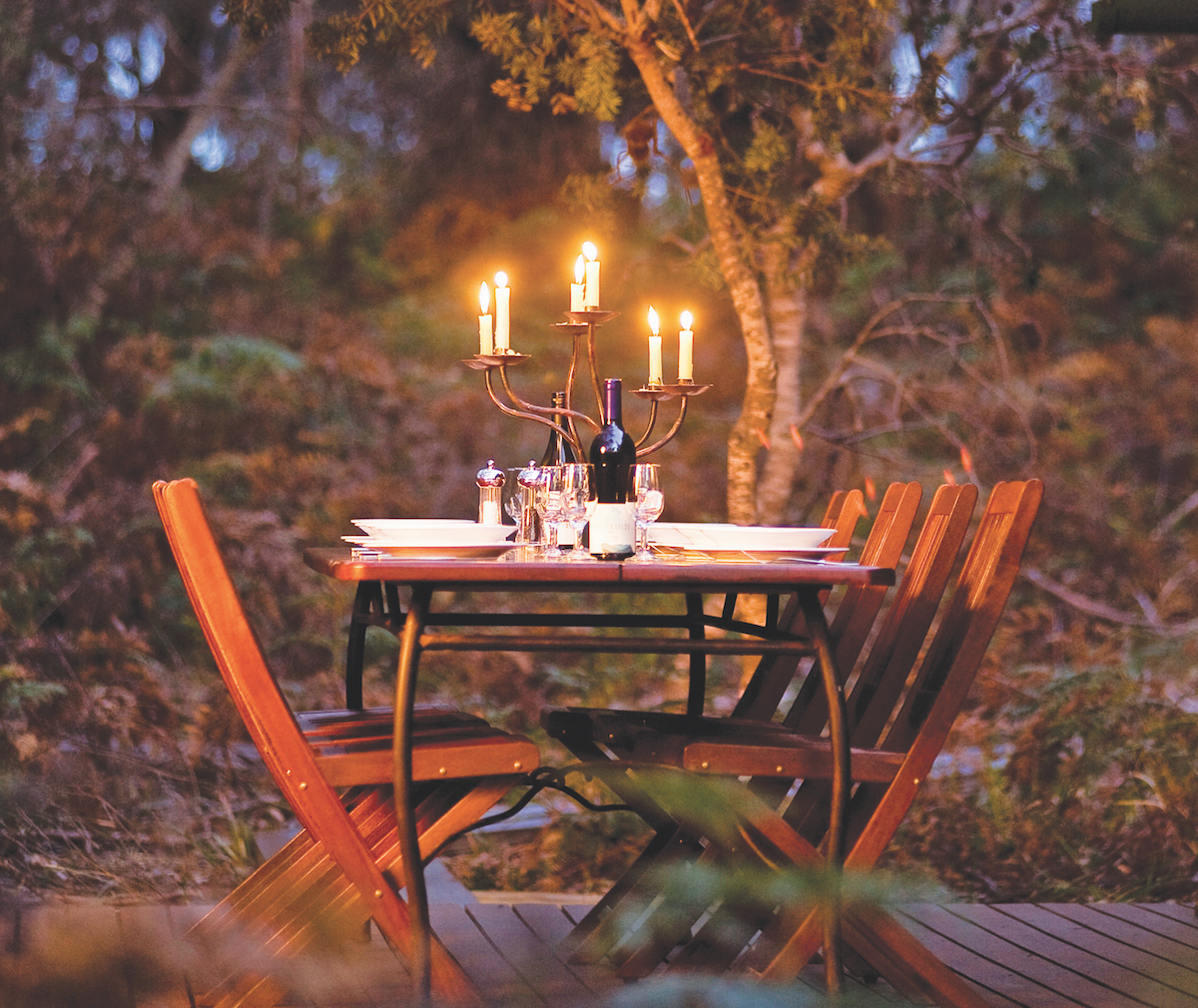
All of this is evident before I even arrive on the island. Having been briefed and kitted out with hiking requisites in Hobart — a pack, head torch, assortment of snacks, and an ominous but vital rainproof jacket — I’m introduced to my fellow hikers and guides. Then it’s a 90-minute drive — punctuated by nervous conversation and intermittent factoids from the likes of our guides — to the small fishing village of Triabunna. Sue, one of my guides, points out the Old Convict Road that snakes in alongside the comparative embodiment of modernity we’re driving along, and already the history that haunts this corner of the world feels tangible. “The physical labour that would have gone into making that …” Sue trails off wistfully.
At Triabunna, we board the Maria Island Ferry which takes us via the Mercury Passage to the island itself. Admittedly, I have a partiality for being out on the ocean, but it’s difficult not to feel content with the sea breeze in your hair, the sunshine on your back, and a white-breasted sea eagle gliding gracefully up above you.
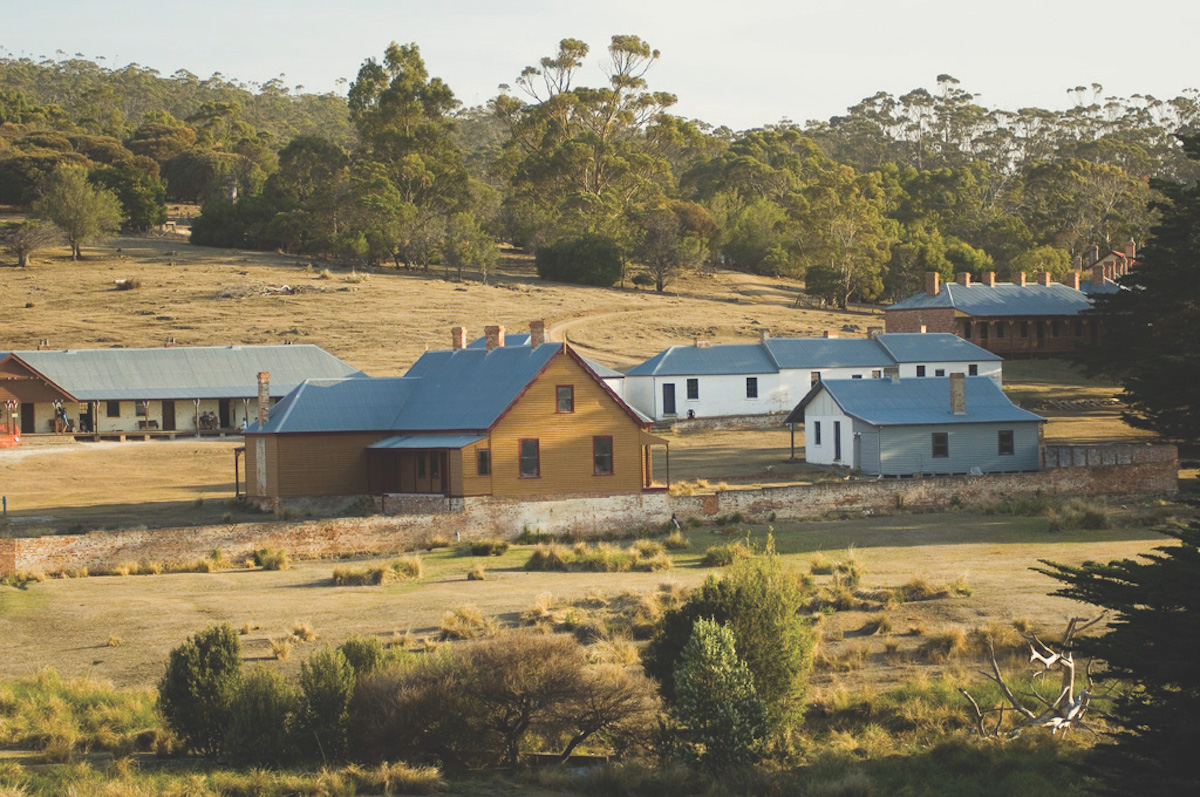
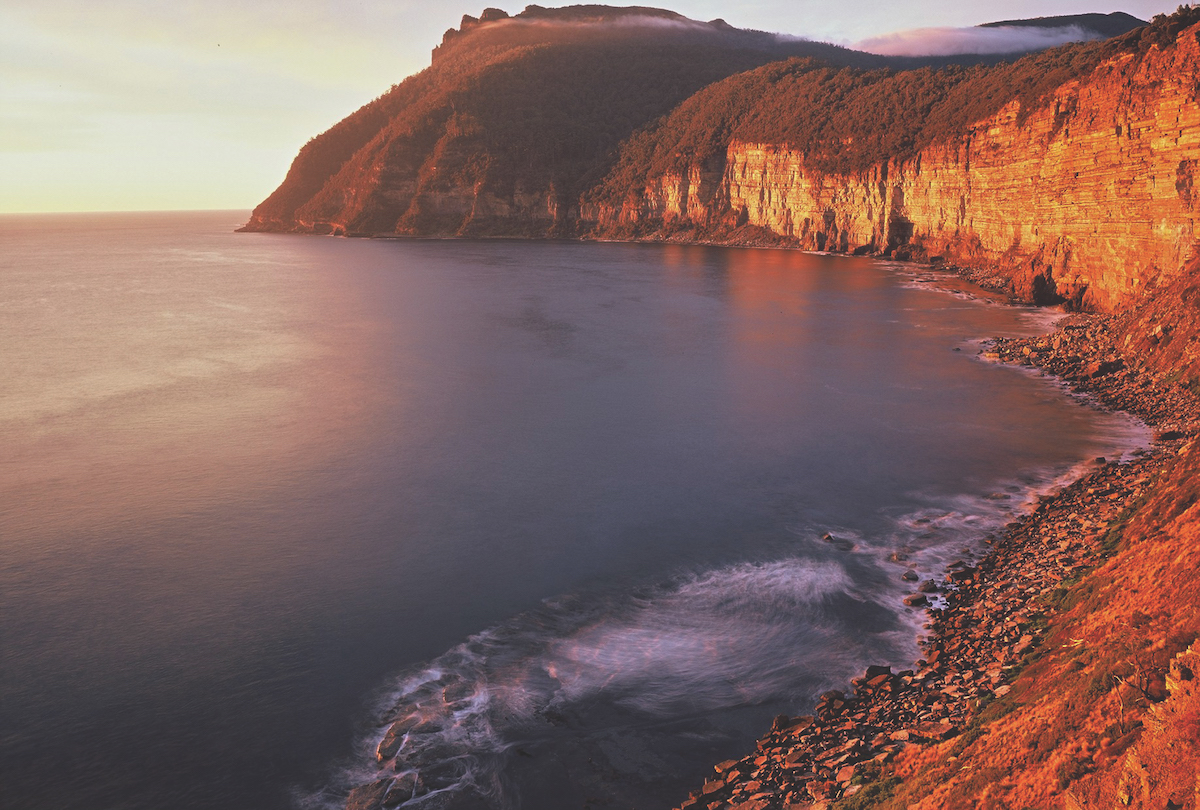
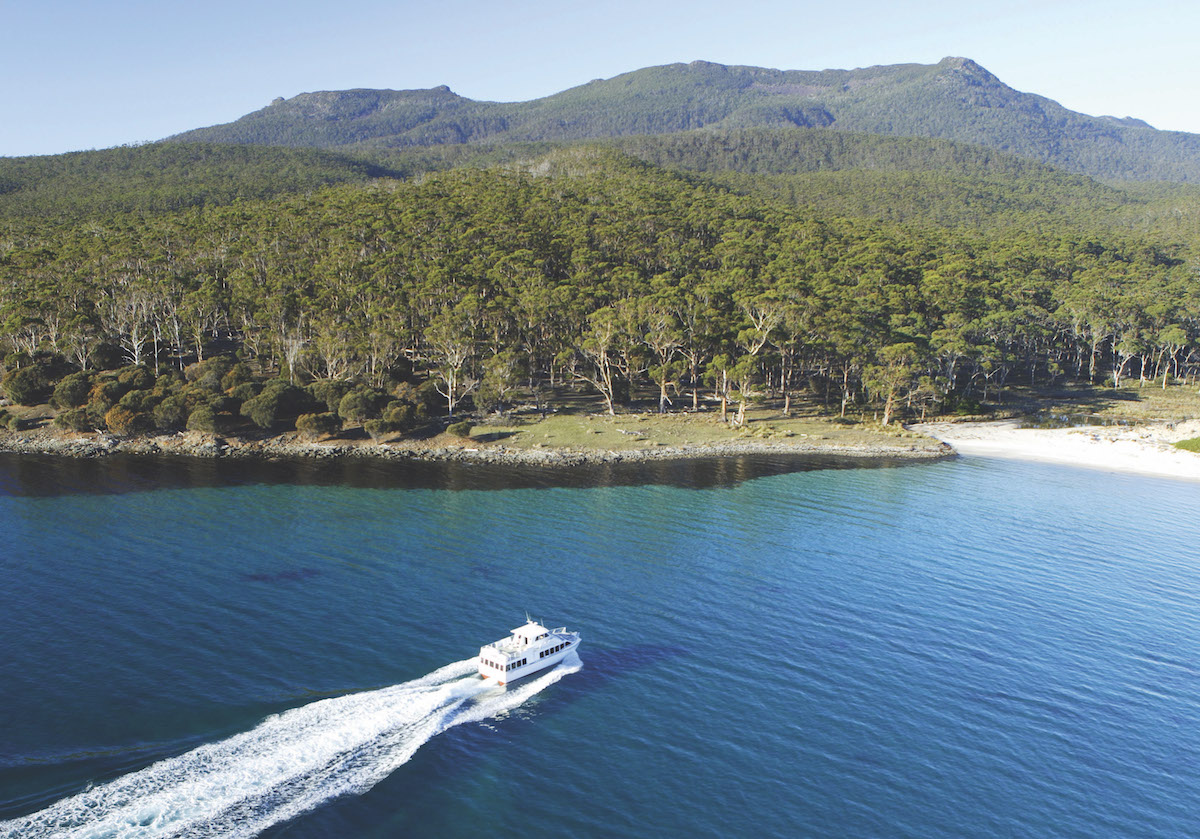
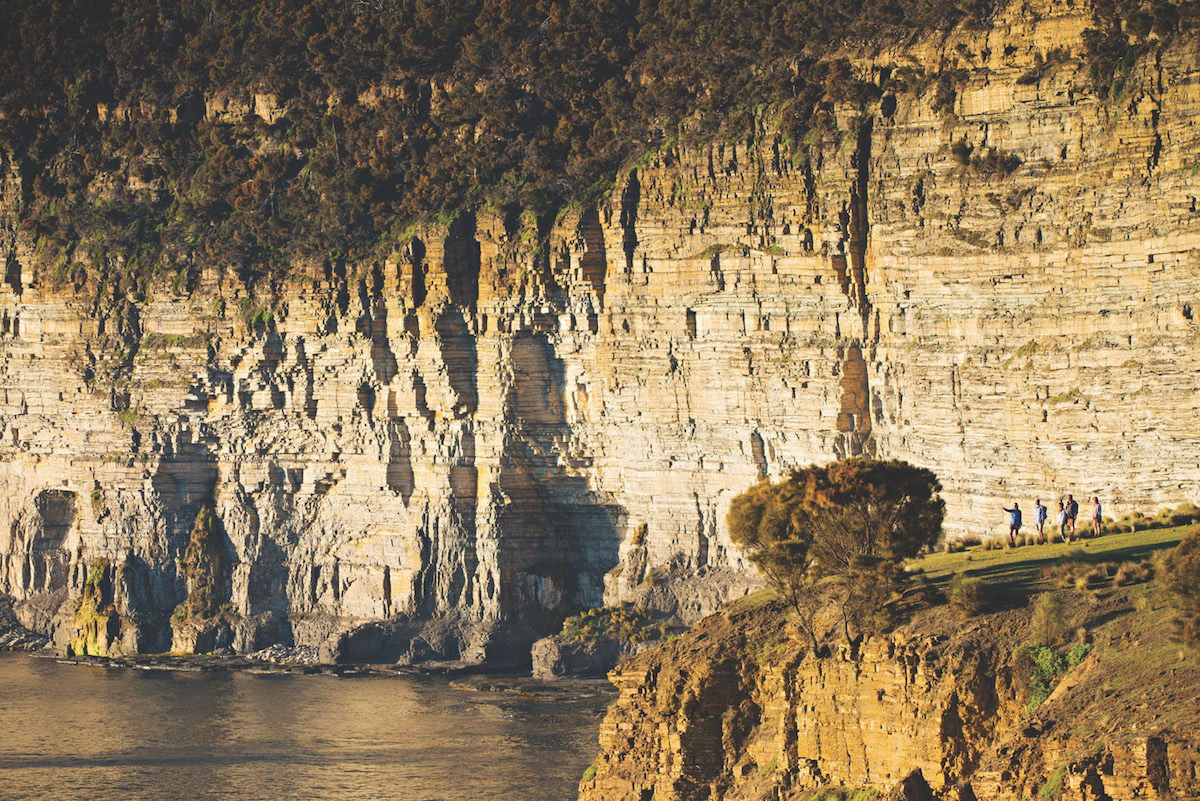
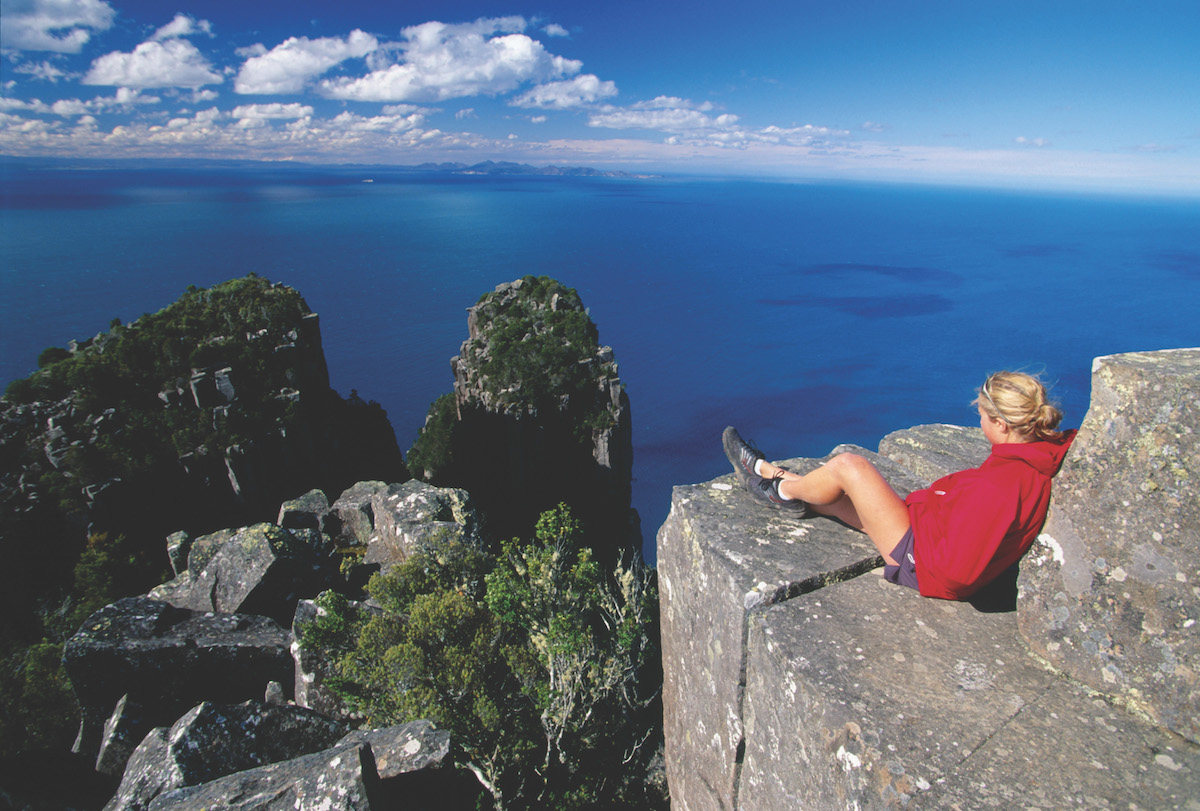
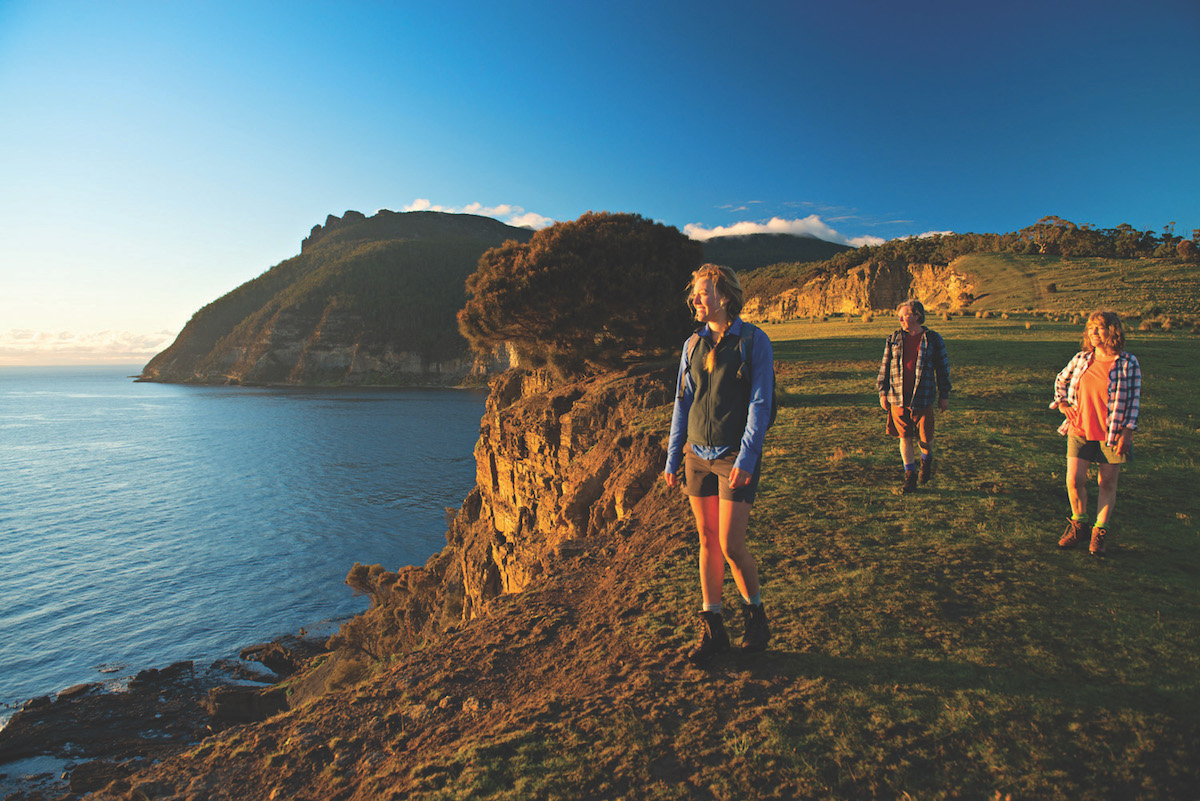
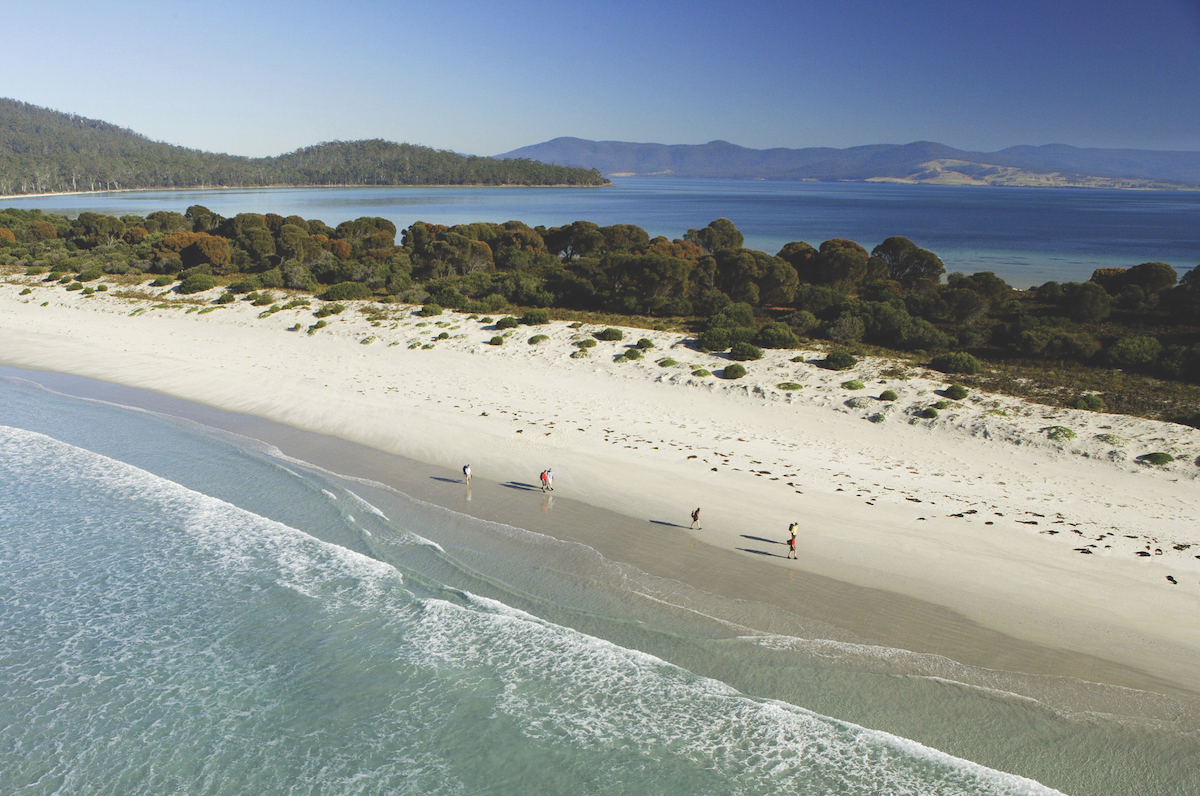
We arrive at Shoal Bay where the white sand is so fine it squeaks beneath our boots. Squeaking our way along the beach, the water lapping soothingly on the shore, we have our first encounter with the endangered hooded plover, or ‘twinkle toes’, as Sue refers to the delicate little species. So tiny they are difficult to spot, and with legs as thin as toothpicks, these dainty, pale birds dance along the shoreline, flirting with the water.
While our legs don’t move nearly as quickly as those of the hooded plover, we swiftly make our way to Casuarina Beach camp, the first of two overnight wilderness camps. These camps redefine glamping, yet are somehow ecologically sustainable. Nestled just back from the beach are a series of canvas-and-timber structures that have been curated specifically for comfort. These are our cabins, and each contains two beds with genuine mattresses and pillows; in fact, no makeshift inflatable camping paraphernalia features on this trip at all.
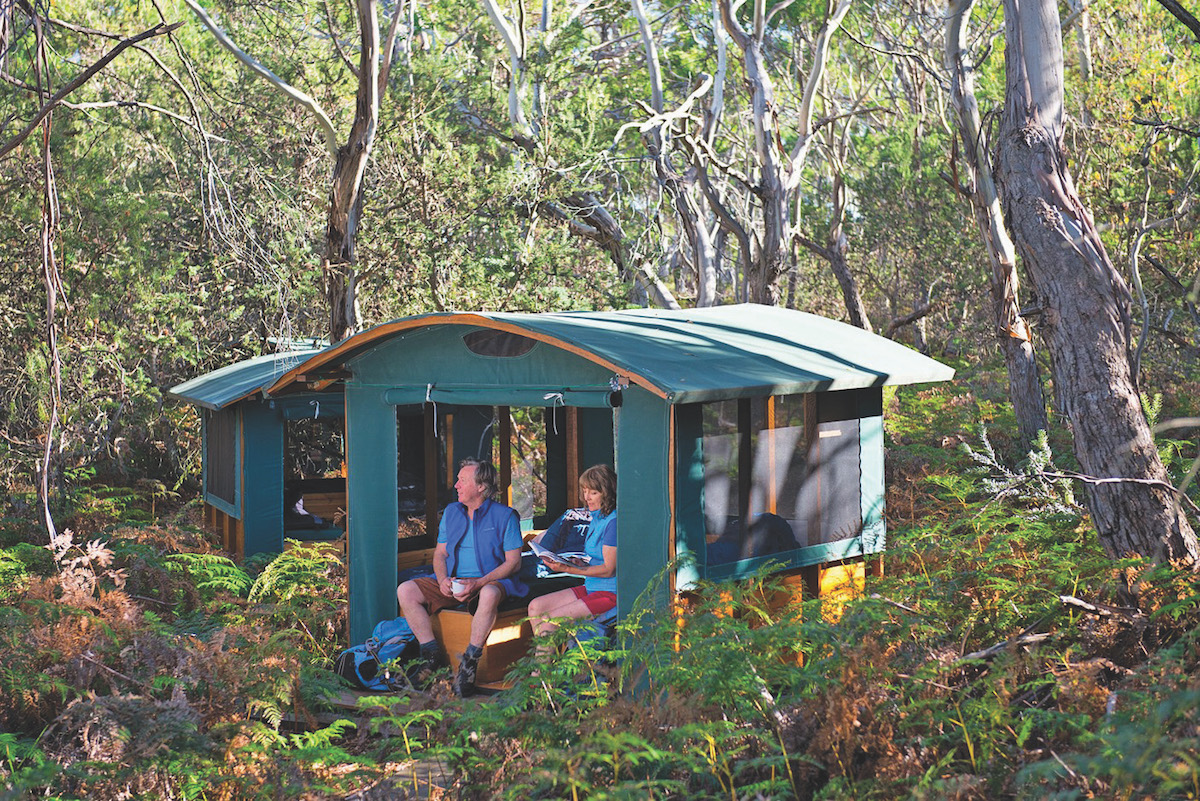
The dining ‘tent’ is all the more impressive for the incredible food and drink that comes out of it. Without electricity, our guides seemingly whip up a three-course meal. An entrée of bruschetta with goat cheese, vine-ripened tomatoes, and basil is followed by a main of lightly seared Tasmanian scallops with saffron risotto. If you have a sweet tooth like I do, you’re in luck, because dessert is a summer pudding with fresh berries and King Island cream. Of course, I wouldn’t be doing justice to Tasmania’s delicious food offering without pairing it with some of the region’s similarly enjoyable wines. A glass of Cape Bernier Pinot Noir rounds the meal out perfectly, and makes my weariness all the more pronounced.
So tiny they are difficult to spot, and with legs as thin as toothpicks, these dainty pale birds dance along the shoreline, flirting with the water.
Before I trundle off to my private refuge, I’m engaged in a post-meal conversation — something that has sadly become a rarity in my digitally frenetic life. To discuss the day’s highlights and laugh about our missteps, literal and otherwise, is something of a joy. I realise, all too ironically, that being without my phone or computer has enabled me to feel reconnected and calm — and this is just day one.
“Make sure you don’t leave your shoes outside overnight,” says our other guide, Tim, as we make our way to bed. “The devils might get them.” In possession of a larrikin sense of humour, I’m not sure whether or not to believe him, but decide not to risk it just in case.
Just like clockwork, it starts to sprinkle down with rain as I tuck myself up into my sleeping bag. The pitter-pattering atop the canvas roof is comforting, particularly in tandem with the crashing waves of the ocean. Before I even know I’ve fallen asleep, I’m being woken to a gently rising sun and the sound of twittering birds. I wish I could lie in this moment forever.
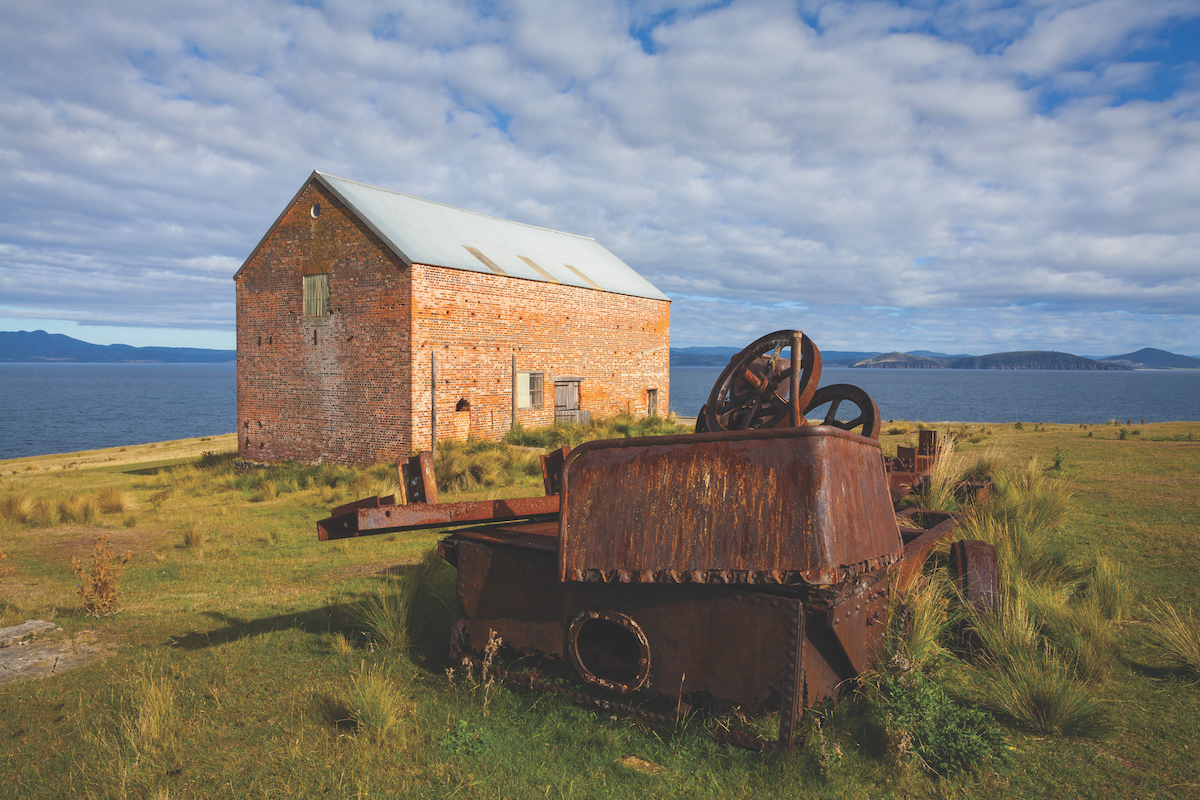
Crumbling red brick cells stand to attention on the headland, tufts of grass and noxious
weeds snake their way through crevices and demonstrate the passing of time.
After a delicious breakfast of scrambled eggs and smoked salmon, we pack up our gear and set out on what our guides dub ‘five-beaches day’. Needless to say, we meander between a quintet of beaches throughout the day, each one showcasing a slightly different aspect of the island’s natural beauty. While the aquamarine water, snow-white sand, and sunshine make for what one of my fellow travellers from Sweden refers to as paradise, it’s the dilapidated remnants of a convict outstation that truly captivates me. Crumbling red-brick cells stand to attention on the headland; tufts of grass and noxious weeds snake their way through crevices and demonstrate the passing of time.
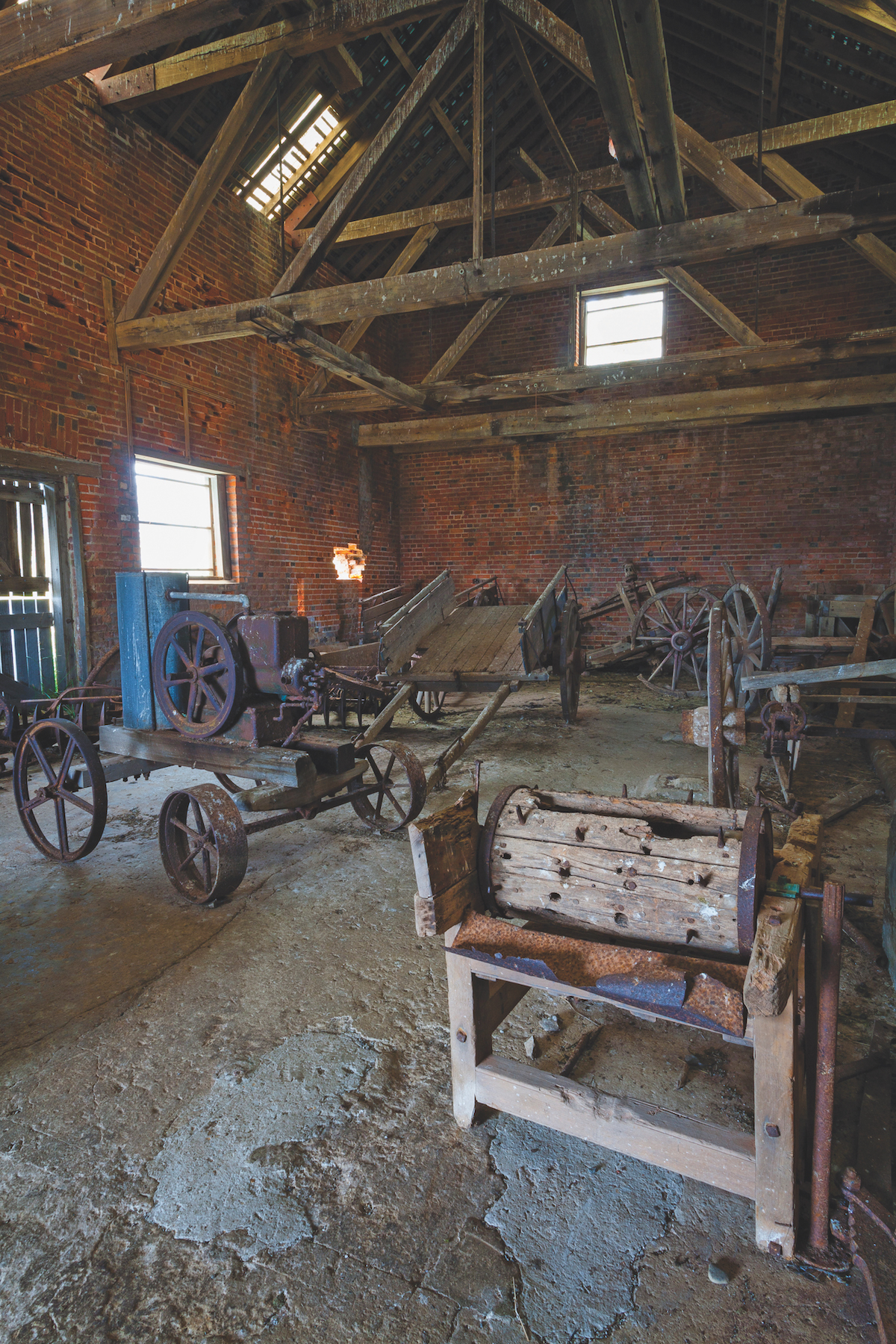
I walk into one of the cells and am immediately thankful that I’m not claustrophobic. It’s easy to picture Australia’s convict history playing out here, and equally hard to accept. The harshness of this climate and isolation the convicts would have endured is harrowing, and I feel it all the more acutely for standing in their footsteps.
It’s hard to remain pensive for too long, though, particularly with frequent sightings of wombats and echidnas bringing you back to the present moment. Sarah, another of our guides who has tag-teamed with Sue, is particularly enamoured by the wombats, and her adoration is contagious. “Did you know that wombats are faster than Usain Bolt?” she asks rhetorically. I look at the stocky, sandy-brown little creature eating grass in the near distance, and can’t help but doubt her. “Bolt can run up to 37 kilometres per hour, while a wombat can run up to 40 kilometres per hour.”
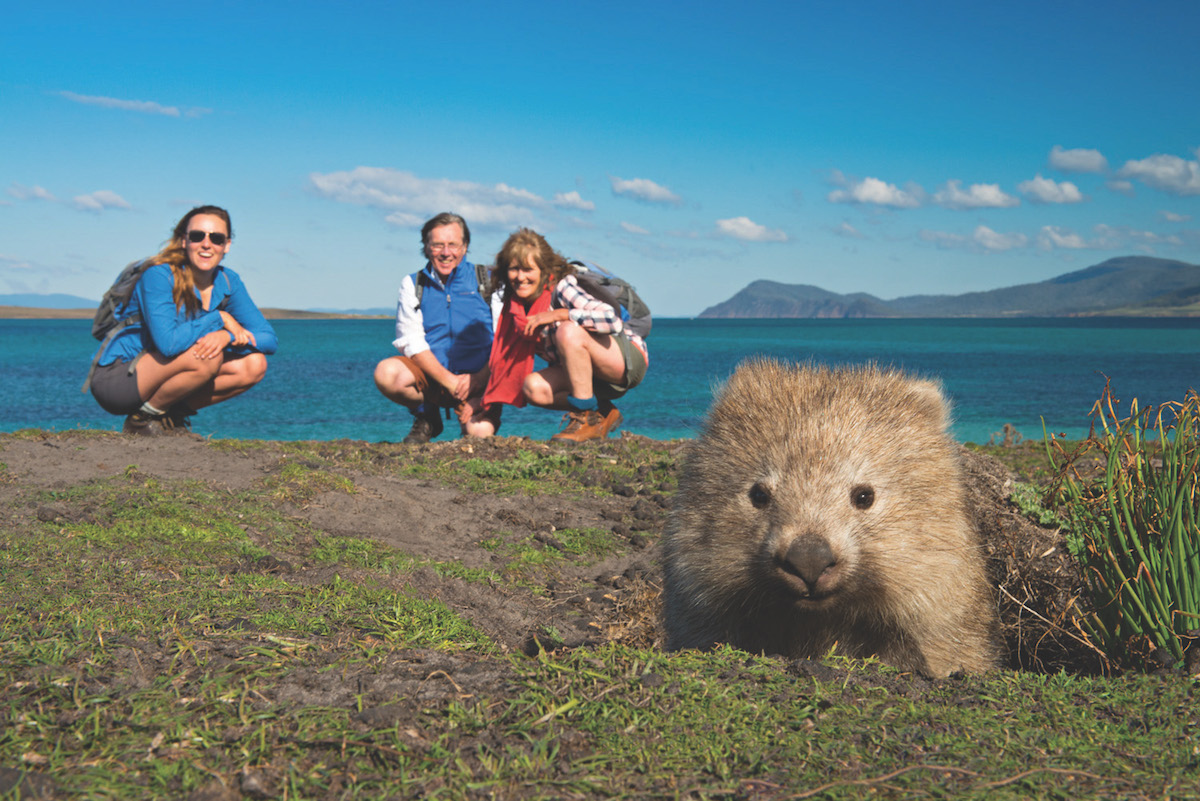
We arrive late in the afternoon at White Gums camp, and after a full day of walking feel justified in putting up our feet. I’m somehow peer-pressured into going for a swim, which, in early spring, is nothing short of freezing. Not to worry, however; pre-empting my return, Sarah has heated up a hot bucket of water. I carry the bucket over to the most luxe bush shower I’ve ever seen — a three-walled timber cubicle fitted with a shower faucet — and looking out at the eucalyptus trees and scrub, slowly thaw out.
It’s the following morning, the beginning of ‘mountain day’, that brings us to the aforementioned trouser-less water crossing. Of course, modesty has a whole new definition in the bush, and before long we’re well on our way up Mount Maria, the highest point on the island. The landscape once again transforms, and in place of beaches is a meandering track through woodlands. Just as I’ve gotten used to the stringybarks and wattle, the path opens up to an assemblage of boulders — a veritable playground for adventure buffs. I clamber my way up to the summit where the 360-degree view is well worth the effort. The sky is slightly smudged with clouds, but it just makes looking over the mainland all the more dramatic. To the left I can see the entire path we’ve traversed since we arrived at Shoal Bay, and to the right our final destination: Darlington.
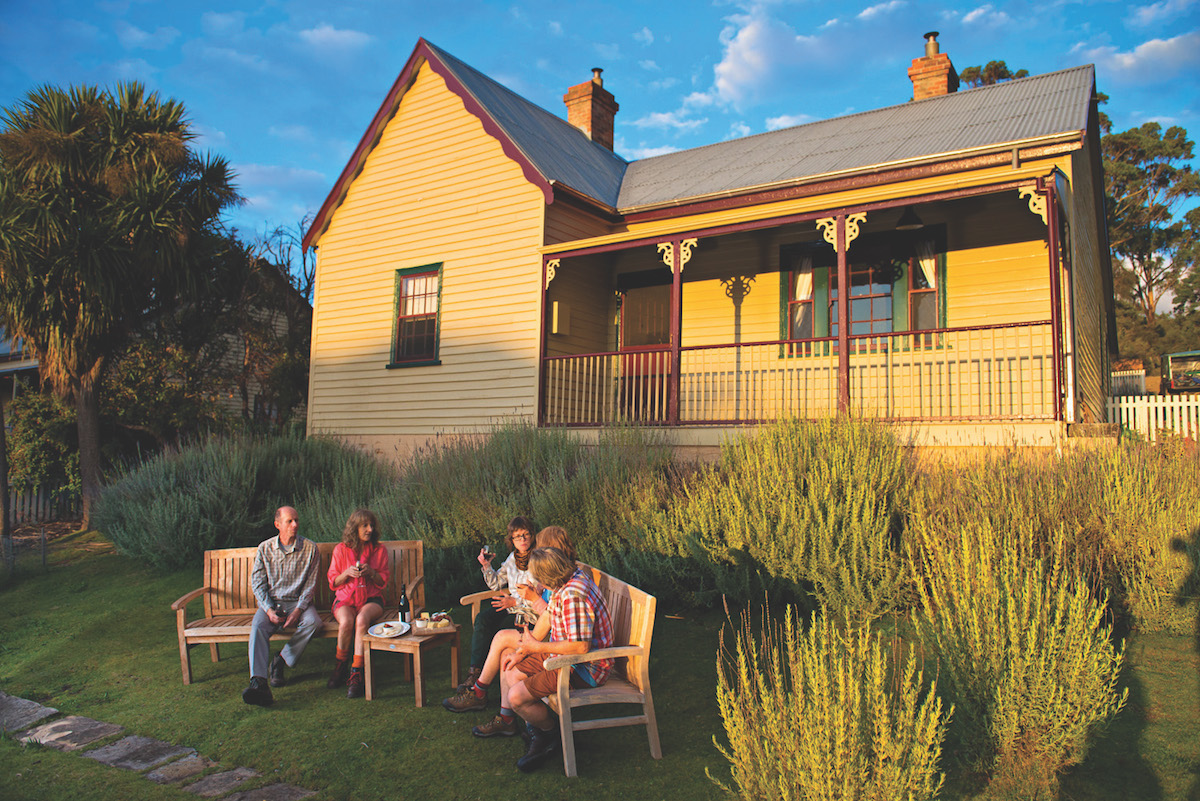
Exhausted but enchanted, we make our way down the scree and through the scrubland toward Bernacchi House in Maria Island’s one and only township, Darlington. Once the home of Signor Diego Bernacchi — whose entrepreneurial spirit saw him try to transform Darlingtion, tragically unsuccessfully, into a hub of industry — this old weatherboard house is testament to the enduring history of the region. Beautifully restored, the house has been painted lemon yellow, burgundy and deep green, and is surrounded by a white picket fence which does little to keep out the Cape Barren geese and wombats.
Having had a hot shower, I plonk myself down on the lounge in the sitting room and warm up with a glass of Gala Estate Pinot Noir in front of a raging fire. Out the window, the sun casts violet and ruby streaks across the sky, marking the transition from day to night.
My final day on the island is spent exploring Darlington, and it’s here that I realise Maria Island is a time capsule. Not only is it home to one of the best-preserved penal stations in Australia, but it also boasts geological remnants — shells and mineral deposits — that date back 450 million years, an extensive assortment of indigenous relics, and a long list of rare and endangered wildlife. Traipsing across Maria Island is one of the most inspiring ways of unwinding and getting back to nature — but more than that, it’s a foray back through history.

